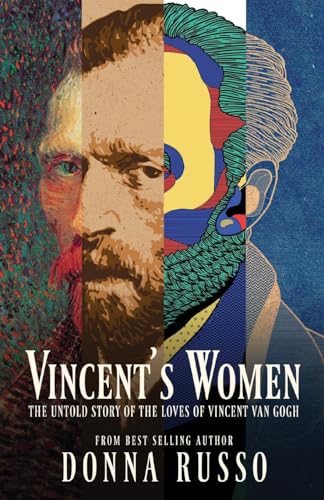Vincent’s Women: The Untold Story of the Loves of Vincent van Gogh
Vincent’s Women tells the dramatic and little-known story behind the women in Vincent van Gogh’s life—the lovers, prostitutes, heartbreakers, caregivers and family members who influenced his decisions and his art at pivotal moments in his life. Born into a Dutch family in 1853, he drifted into art-dealing and ministry as a young man, but depended on continuous financial and emotional support from his brother, Theo. After he met Paul Gauguin and other artists in the post-impressionist movement, he sought solitude in southern France. It was there that his sketches and dark renderings changed—to colorful, vibrant expressions of the natural world including The Red Vineyard and Vase with 15 Sunflowers. Never emotionally stable, he eventually ended up in a psychiatric hospital at Saint-Remy in the care of Sister Epiphany, where he painted Irises and Starry Night. Flashes of stability led him to put himself under the care of Paul Gachet, a doctor of homeopathic medicine. Though his work was beginning to attract critical artistic attention, and his friendship with Gachet’s daughter, Marguerite, had become a source of calm, loving inspiration, in 1890 he died quite tragically under suspicious circumstances.
Russo guides the story through the narrative of Theo’s wife, Johanna, as she acquaints her son with the truth behind his Uncle Vincent’s stormy, passionate life, and, in the process, questions long-standing assumptions about how he lost his ear, his sexuality and whether he died by suicide or murder. Hundreds of eloquent and expressive letters were exchanged between Vincent and Theo that reveal the artist’s thoughts and theories. It is this extraordinary correspondence, with its intimacy and autobiographical sketches, that the author drew from to build layers of dimension and depth into her compelling portrait of a misunderstood genius in his time. This thought-provoking and beautifully constructed work is a must-read for everyone interested in art history and van Gogh










